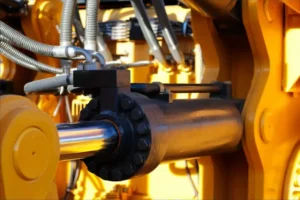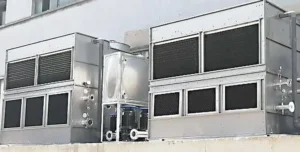Медеплавильное производство предполагает извлечение меди из руд., преимущественно двумя способами: пирометаллургия и hydrometallurgy.
Pyrometallurgy: The Dominant Copper Smelting Method
Pyrometallurgy remains the most widely used method for copper smelting, particularly for processing sulfide ores. The process involves high temperatures to extract copper from its ore, with several key steps to ensure efficient metal recovery:
1. Ore Dressing and Flotation
The first step in pyrometallurgy is ore dressing, which involves the separation of valuable minerals from waste materials in the ore. Physical separation methods such as gravity separation and magnetic separation are commonly used, but flotation is the most critical. In flotation, the copper ore is mixed with water and chemicals, causing copper ore particles to attach to bubbles. These bubbles float to the surface, forming foam, and the copper ore is separated from other minerals, improving the efficiency of subsequent processes.
2. Calcination (Roasting)
The flotation concentrates are then subjected to calcination or roasting, where they are heated to remove impurities such as sulfur and oxygen. This step converts sulfide copper ores into oxidized copper ore and helps volatilize or decompose unwanted elements. There are two types of roasting:
- Semi-oxidative roasting is used when the sulfur content is low.
- Fully oxidative roasting is employed for concentrates with higher sulfur content, to ensure thorough oxidation before further processing.
3. Плавка
Smelting is the core of copper extraction, where the roasted ore undergoes further chemical reactions at high temperatures. The goal is to separate copper from iron and gangue, producing a copper-rich matte. The two main smelting processes are:
- Flash Smelting: In this method, finely dried concentrate is injected into a reaction furnace, where it is exposed to oxygen-rich air. The concentrate undergoes rapid smelting, and the resulting molten products (matte and slag) are separated in a settling tank. This method is highly efficient, producing both copper matte and sulfur dioxide gas, which can be further processed for sulfur recovery.
- Bath Smelting: In this method, oxygen-rich air is blown into a molten bath of matte and slag, with the concentrate added. The bath is vigorously stirred, ensuring complete smelting. Furnace types for bath smelting include horizontal, vertical, rotary, and fixed furnaces. The type of blow used—side, top, or bottom—affects the efficiency and characteristics of the smelting process.
4. Blowing
After smelting, the next step is blowing, which helps further refine the copper by oxidizing and removing impurities such as sulfur and iron. This process is typically done in P-S converters, but newer technologies like continuous refining и flash refining are also becoming more common.
5. Переработка
Refining further purifies copper, and there are two primary methods used:
- Pyrometallurgical Refining: This process exploits the differences in the affinity of various impurities for oxygen. Impurities are removed via oxidation, slagging, or volatilization.
- Electrolytic Refining: This method involves electrolysis to remove any remaining impurities, yielding high-purity copper (cathode copper) with a purity of up to 99.99%. Electrolytic refining is the most widely used technique for producing refined copper.
Hydrometallurgy: A More Environmentally Friendly Option
Hydrometallurgy is another effective method for copper smelting, particularly for low-grade ores и oxidized copper ores. This technique relies on chemical reactions rather than high heat to extract copper from ore, offering several environmental advantages, though it is generally less efficient than pyrometallurgy.
1. Ore Crushing
The first step in hydrometallurgy is to crush and grind the ore, increasing the surface area and allowing better interaction with the leaching solution. This step is crucial for improving the efficiency of the subsequent leaching process.
2. Leaching Treatment
The crushed ore is then subjected to a leaching treatment, where it is mixed with a suitable solvent—typically a dilute sulfuric acid solution. The sulfuric acid dissolves the copper minerals in the ore, forming copper sulfate in the solution. This step can be done in heap leaching, agitated leaching, или tank leaching, depending on the ore characteristics.
3. Filtration Separation
After leaching, тот leachate (the solution containing dissolved copper) is separated from the solid waste (residue) by filtration. This step ensures that the dissolved copper is ready for the next stage of extraction.
4. Extraction and Purification
Copper ions are extracted from the leachate using an extractant. The extracted copper is then further purified to remove any remaining impurities. This purification step can involve solvent extraction, where a chemical agent selectively bonds with the copper ions, или precipitation methods using reducing agents.
5. Электролиз or Replacement
Finally, the copper ions are reduced to metallic copper through either electrolysis или replacement processes:
- В electrolysis, the copper ions are reduced at the cathode to form pure copper metal, which is collected and processed into cathode copper.
- Replacement involves using a more reactive metal, например, железо, to displace copper from the solution, precipitating copper in solid form.
Заключение
Пока пирометаллургия is more efficient and widely used for high-grade and sulfide copper ores, hydrometallurgy offers a more environmentally friendly alternative for low-grade or oxidized ores.







